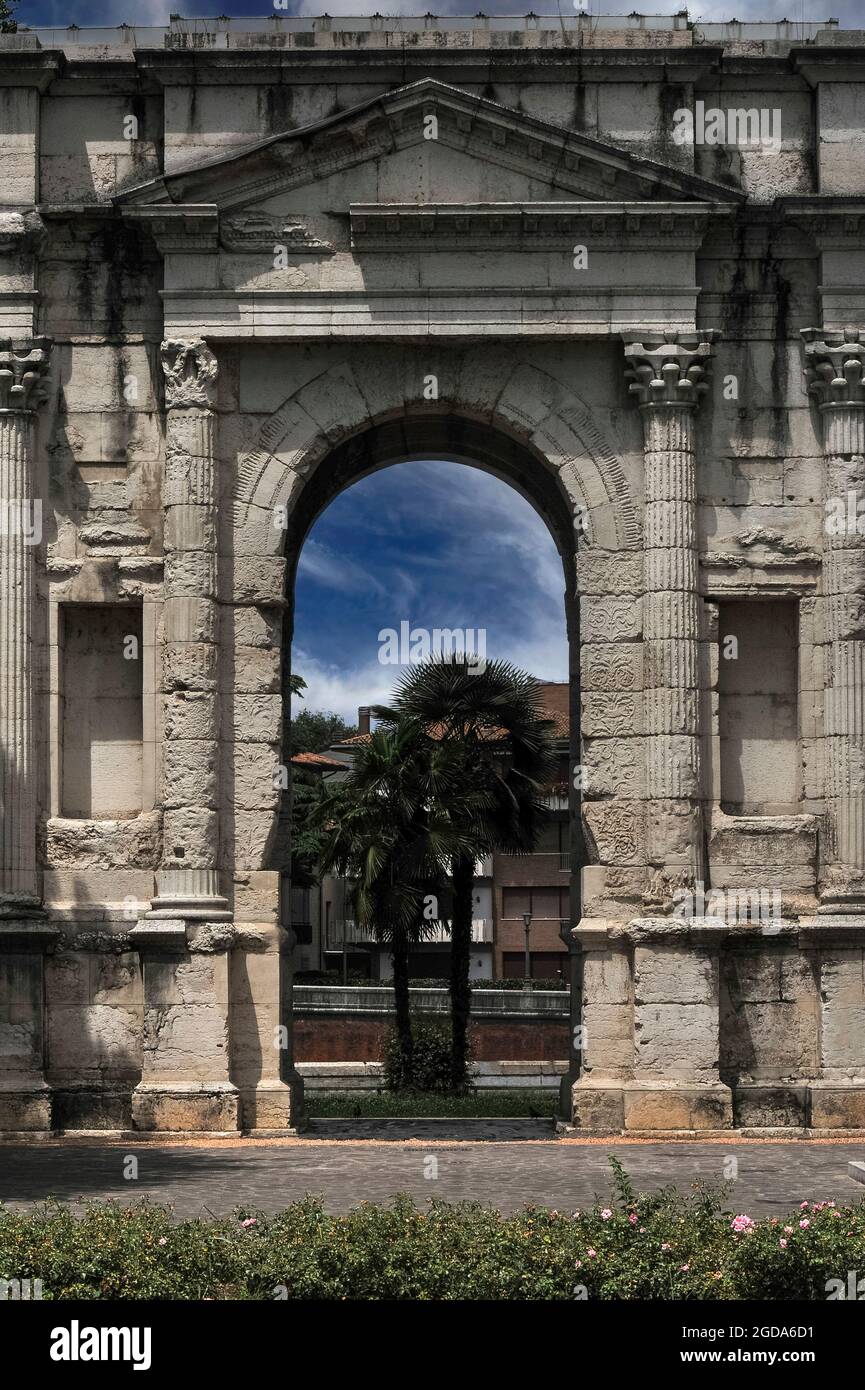The Arco dei Gavi in Verona, Veneto, Italy: built to glorify a powerful Ancient Roman family, demolished by Napoleon Bonaparte’s military engineers, left as a heap of stones under an arch of the city’s Roman Arena, but then rebuilt in 1932 by Prime Minister Benito Mussolini as part of his campaign to encourage Italians to identify with their country’s illustrious Roman past. A short section of black basalt Roman roadway relaid beneath the arch is grooved by the wheels of ancient carts and chariots.

Image details
Contributor:
Terence Kerr / Alamy Stock PhotoImage ID:
2GDA6D1File size:
31.9 MB (2.2 MB Compressed download)Releases:
Model - no | Property - noDo I need a release?Dimensions:
2723 x 4092 px | 23.1 x 34.6 cm | 9.1 x 13.6 inches | 300dpiDate taken:
18 July 2010Location:
Verona, Veneto, ItalyMore information:
This image could have imperfections as it’s either historical or reportage.
Verona, Veneto, Italy: the Ancient Roman Arco dei Gavi, built for a noble family in the 1st century AD, was demolished in 1805 by Napoleonic engineers, but was then rebuilt more than a century later, in 1932, by Italian Prime Minister Benito Mussolini – albeit on a new site facing the River Adige and beside the Castelvecchio fortress. Although the structure looks like a typical Roman Corinthian triumphal arch celebrating rulers or military victories, it was designed by architect Lucius Vitruvius Cerdo purely to glorify the powerful Gavi dynasty, and its niches once displayed statues of Gavi family members. The arch spanned the Verona entrance to the Via Postumia or Via Sacra, an important Roman road linking Liguria in northern Italy’s far west to ancient Illyria, the western Balkan region stretching from Albania to Istria in modern Croatia. A short section of the Via Postumia relaid beneath the archway clearly displays ancient grooves worn in the black basalt slabs by cart and chariot wheels. The Arco dei Gavi became a gateway in Verona’s medieval city walls, but when Italy came under Napoleonic rule, French engineers viewed it as a hindrance to local traffic and to military mule trains. The stones left by the demolition lay piled for decades in Piazza Cittadella before they were moved under an arch of the city’s Roman Arena. Benito Mussolini, exhorting Italians to identify with their Roman past, decided to rebuild the arch on a new site, re-using some of the original stones. The reconstruction was based on 16th century plans drawn up by the influential Renaissance architect Andrea Palladio, and on a wooden model made prior to the 1805 demolition. A grey marble rectangle now marks the place where the arch once stood. D0612.A7316